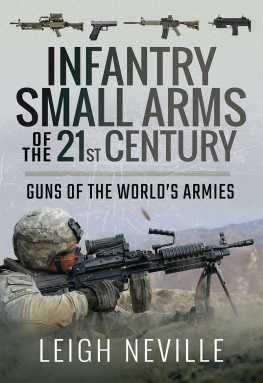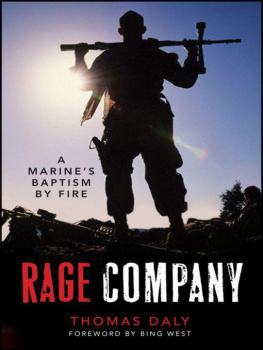The Sling and The Stone
ON WAR IN THE 21ST CENTURY
Davids sling-and-stone fight against Goliath isnt that far from Iraqi insurgents fighting against coalition forces. While the Department of Defense (DOD) continues to build a high-tech American military to win wars against other, albeit second-tier, Goliaths, insurgents have adopted and are practicing sling-and-stone, low-tech, fourth-generation warfare (4GW). These 4GW warriors rely on networks of people versus Americas networks of state-of-the-art, high-tech weapons.
Colonel Thomas X. Hammes, USMC, explores the evolution and current practice of 4GW. DODs focus on high-tech drives its doctrine, organization, training, and education to teach people to take advantage of technologynot to think about, fight, and win wars, says Hammes.
Just as the world has evolved from an industrial society to an information-based society, so has warfare. Information collection against todays threats requires a greater investment in human skills. Technology by itself is not the answer. The U.S. defense establishments failure to address the importance of human knowledge over that of technology leaves us unprepared to deal with the kind of wars we are fighting today and those we are most likely to face in the futurefourth-generation wars.
The Sling and The Stone explains why 4GW does not attempt to win by defeating the enemys military forces. As weve seen in Iraq, servicing targets with firepower isnt the answer. Fourth-generation warfare is insurgency rooted in the fundamental precept that superior political will, when properly employed, can defeat greater economic and military power. It uses all available networkspolitical, economic, social, and militaryto convince the enemys political decision makers that their strategic goals are either unachievable or too costly for the perceived benefit. Via its networks, it directly attacks the minds of enemy decision makers to destroy the enemys political will.
Not only is 4GW the only kind of war America has ever lost, we have done so three times: Vietnam, Lebanon, and Somalia. It has also defeated the Soviet Union (Afghanistan, Chechnya) and the French (Vietnam, Algeria). Arguably, 4GW has been the most successful form of war for the last 50 years. First defined by Mao, 4GW has evolved as each practitioner learned from his predecessors or co-combatants and refined its techniques.
Faced with enemies they could not beat using conventional war, 4GW warriors sought a different path. The anti-coalition forces in Iraq, the Chechans and the al Qaeda network are simply the latest to use the tactics and techniques that have been developing for decades.
War has entered a new phase, says Hammes. The fact that only unconventional or 4GW has succeeded against superpowers should be a key element in discussing the evolution of war. Unfortunately, it has been largely absent from the debate within the U.S. Department of Defense.
Answers to the hows of 4GW along with recommendations for corrective actions are found in this insightful study of the strengths and weaknesses of conventional military power. Sure to be controversial, The Sling and The Stone should help stir the debate at the Defense Department and throughout the national security community about what kind of military our country needs and what kind of combat Americas armed forces should be prepared to fight.
Praise for
The Sling and The Stone
ON WAR IN THE 21ST CENTURY
Based in history and current events, Tom Hammes explains the nasty, long-term, broad-spectrum wars we have fought and will continue to fight. It stands in sharp contrast to the short, high-tech, clean war the defense department is planning for. He focuses on how to win the war rather than just winning battles. Understanding the type of war you are fighting is the first step to winning. This book will help you understand.
General Anthony Zinni, USMC (Ret.), former CENTCOM commander
Colonel Hammes cuts to the quick in defining the conundrum of dealing with twenty-first century warfare, the competing concepts of its nature and its management. His is a controversial analysis which is bound to raise the hackles of todays techno warriors.
Lieutenant General Bernard Trainor, USMC (Ret.), NBC News military analyst, co-author of Cobra 2 and The Generals War
For nearly a quarter of a century, T. X. Hammes has been one of the Marine Corps most thoughtful students on the evolution of warfare, the ever-changing threats that face us, and the adjustments needed at every level if the U.S. military is to meet the challenges that lie ahead. A blunt, straightforward author, his book reflects candor and insight. He explains the nature of the emerging style of warfare and explains why the current transformation planning is missing the mark.
Colonel John Greenwood, former editor of the Marine Corps Gazette
Colonel Hammes provides a great service by bringing war fighting back to reality. He strips away the misleading fog created by the latest iteration of the U.S. tendency to believe that technology and weaponry win wars, not people and ideas. By looking at the past unconventional wars he shows us what to expect in the future, where there will be no conventional challenge to U.S. superiority but a return to the strategy and tactics used so successfully by opponents such as Ho Chi Minh (against the French first, then the U.S.).
Robert Oakley, former U.S. State Department coordinator for counter terrorism, and former U.S. ambassador to Somalia, Pakistan, and Zaire
The Sling
and
The Stone
ON WAR IN THE 21ST CENTURY
COLONEL THOMAS X. HAMMES, USMC

To Janet who always provided love, support, and understanding through the twenty-nine years of service and six years of deployment that led to this book.
And to Eric, who missed a lot of days with Dad and never complained.
Contents
Introduction
I joined the Marine Corps in June 1975, only a month after the fall of South Vietnam. As I reported to The Basic School, the war that had shaped my high school and college years was finally over. Although the Corps basic officer training continued to emphasize counter-insurgency tactics, it was clear the country as a whole was tired of dealing with or thinking about counterinsurgency. Then in 1976, Martin Binkin and Jeffrey Record published Where Does the Marine Corps Go from Here? which seemed to question not only the need for counterinsurgent forces but for the Corps itself. In fact, the military as a whole was moving out smartly to prepare to fight the Soviets in Europe.
During my first years of service, the Corps shifted focus from small wars to fighting a huge conventional conflict. However, despite the apparent focus on Europe, our defeat in Vietnam remained a major shadow over our forces. Most of the company commanders and all the field grade and general officers who led the Corps during that period had been shaped by their Vietnam experiences. All were frustrated by our defeat and many were striving to understand why. For my part, I too was trying to figure out how the most powerful nation in the world had been defeated by a tiny country with only twenty-two million people and almost no economic power. In almost hundred years, America had never lost a waruntil Vietnam. What had happened?
This was the beginning of my study of what has become known as fourth-generation warfare. Like many military professionals of my generation, I was trying to understand a type of warfare that seemed to change all the rules. In Vietnam, the side with overwhelming wealth, power, and technology had been decisively defeated. We had won the battles but lost the war. One had to wonder what that meant for all traditional concepts of warfare.









